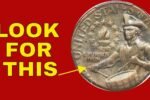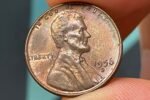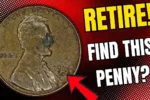$4.4 Billion in One Day Know about P-D-S Error Coins : Have you ever heard of coins worth millions? Some rare error coins have sold for unbelievable prices—like a 1969-S Lincoln Cent that fetched $4.4 million in a single day! But what makes these coins so valuable? The answer: Minting Errors. Mistakes happen, even at the U.S. Mint. When coins are made with errors, collectors go crazy for them. Some errors are so rare that just a few exist, making them worth a fortune.
What Are P-D-S Error Coins?
The U.S. Mint has three main facilities that produce coins:
-
P (Philadelphia)
-
D (Denver)
-
S (San Francisco – mostly proof coins)
Sometimes, coins are struck with the wrong mint mark or have other mistakes. These are called P-D-S errors, and they can be worth big money.
Common Types of Valuable Coin Errors
-
Double Die Errors – The design is stamped twice, making letters and numbers look blurry or doubled.
Example: 1955 Double Die Lincoln Cent (worth up to $25,000).
-
Off-Center Strikes – The coin is misaligned when struck, leaving part of the design missing.
Example: A 50% off-center penny can sell for $100 or more.
-
Wrong Planchet Errors – A coin is struck on the wrong metal blank.
Example: A 1943 Copper Penny (should be steel) sold for over $1 million.
-
Missing Mint Marks – Some coins were accidentally made without a “P,” “D,” or “S.”
Example: 1982 No-P Roosevelt Dime (worth $2,000+).
How to Find Error Coins?
Check Your Change – Look closely at every coin you get. Some errors slip into circulation. Use a Magnifying Glass – Tiny mistakes can mean big money. Learn from Online Guides – Websites like PCGS and NGC list valuable errors. Visit Coin Shops & Shows – Dealers often have rare coins for sale.
Can You Get Rich from Error Coins?
Yes! Some collectors have turned pocket change into thousands (or even millions) by finding rare errors. While most coins won’t make you rich, the hunt is exciting—and you never know what you might find!
Final Tip: Don’t Clean Your Coins!
Cleaning reduces value. If you find a rare coin, keep it as-is and get it certified by a grading company like PCGS or NGC.




